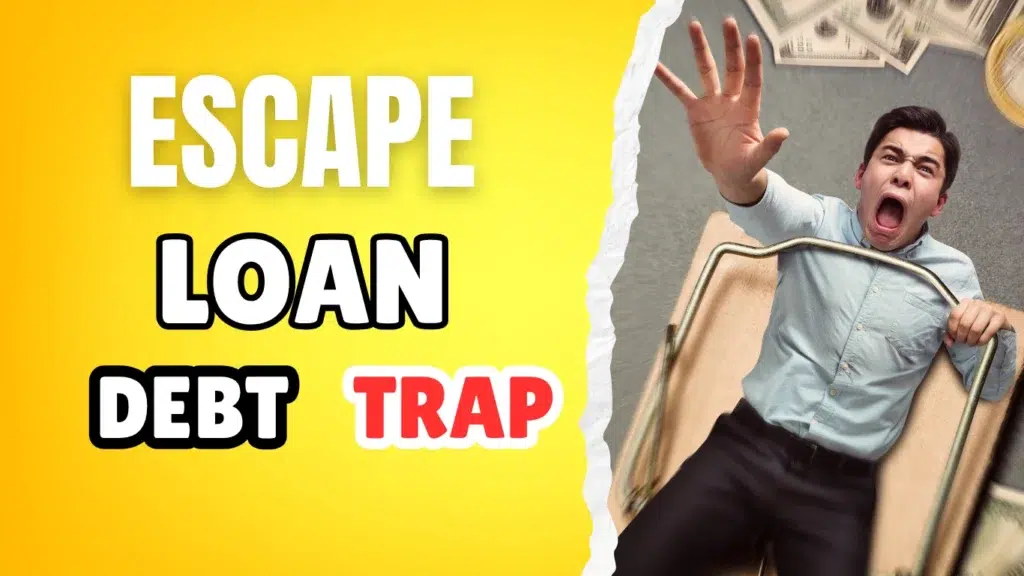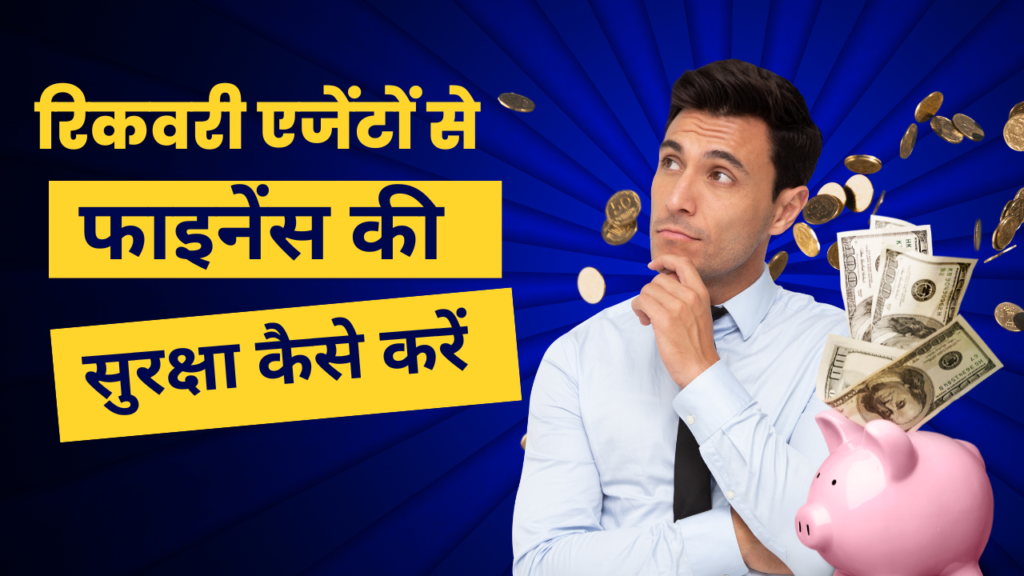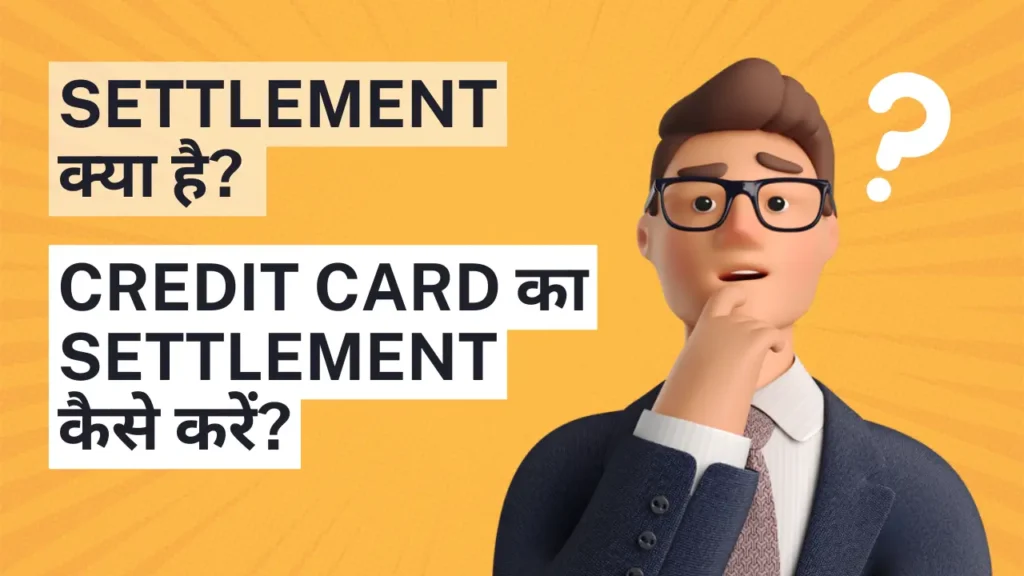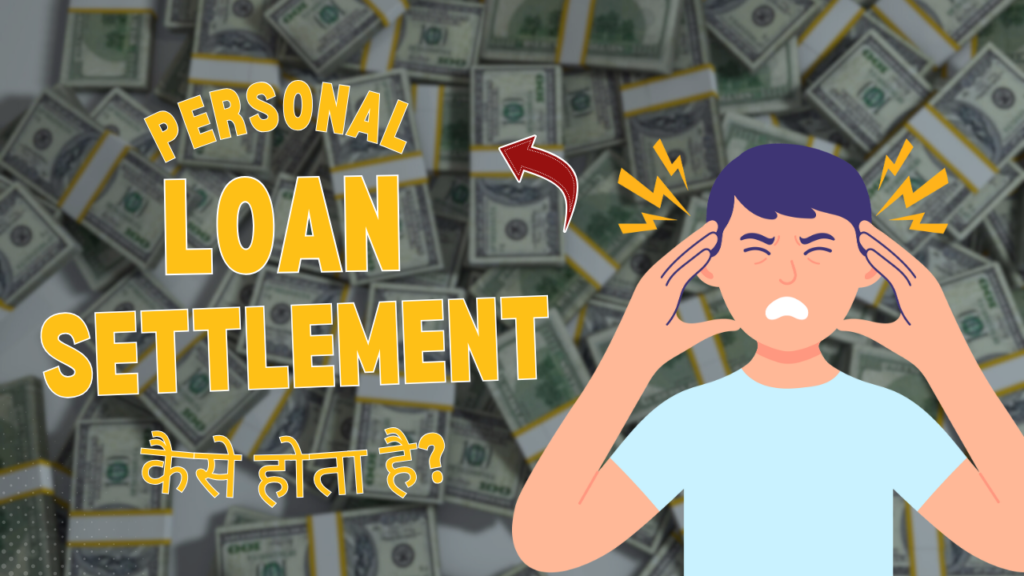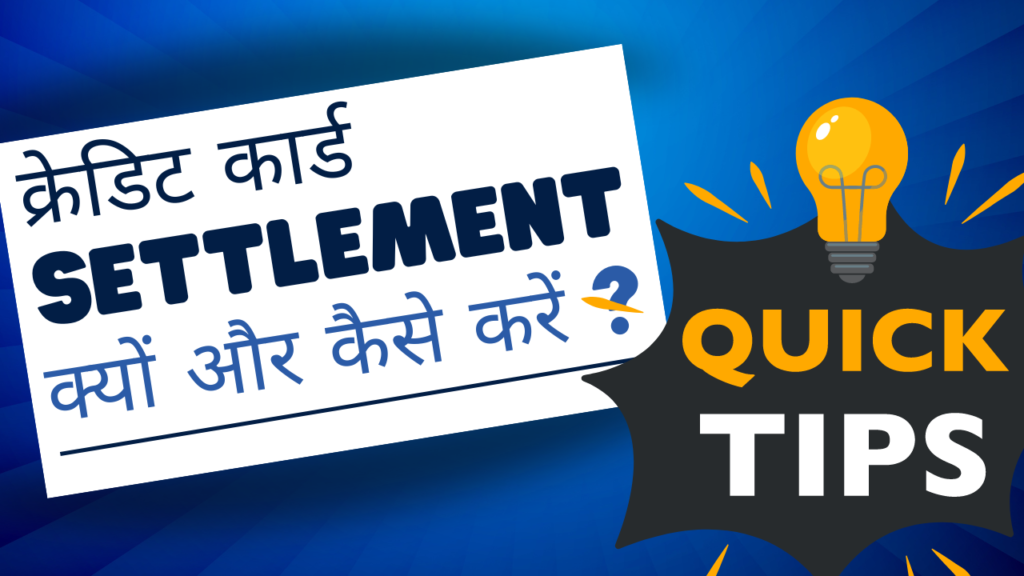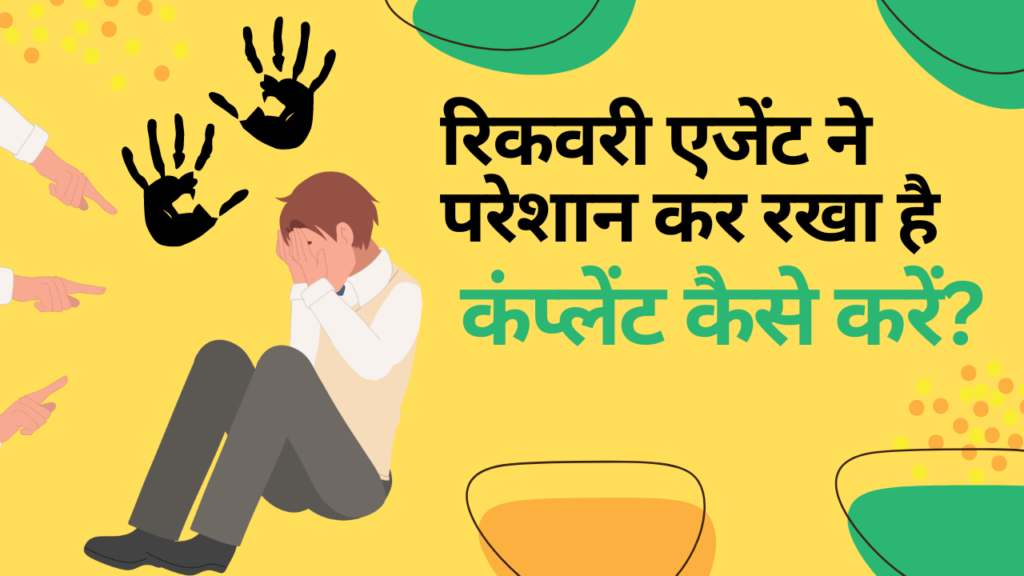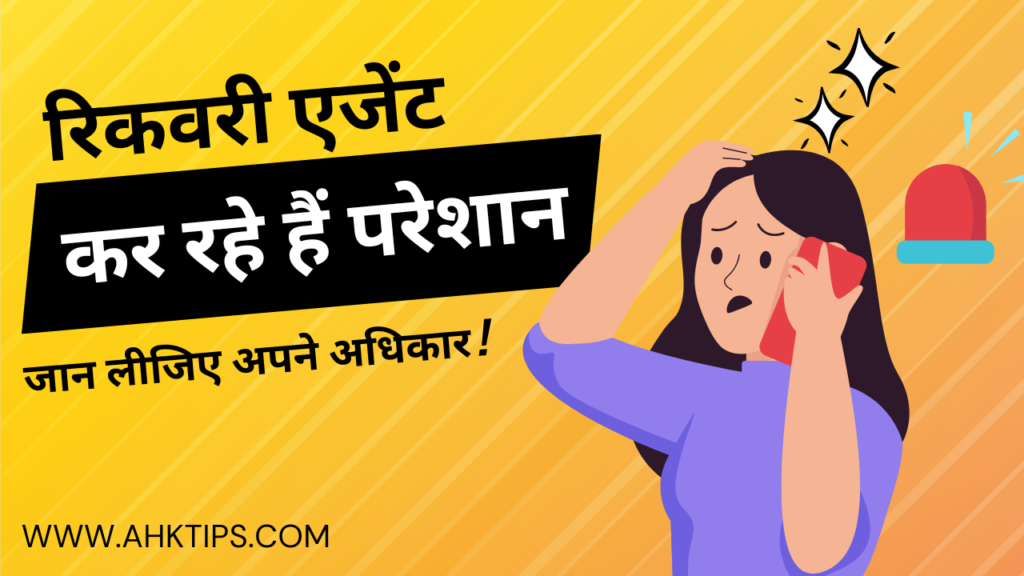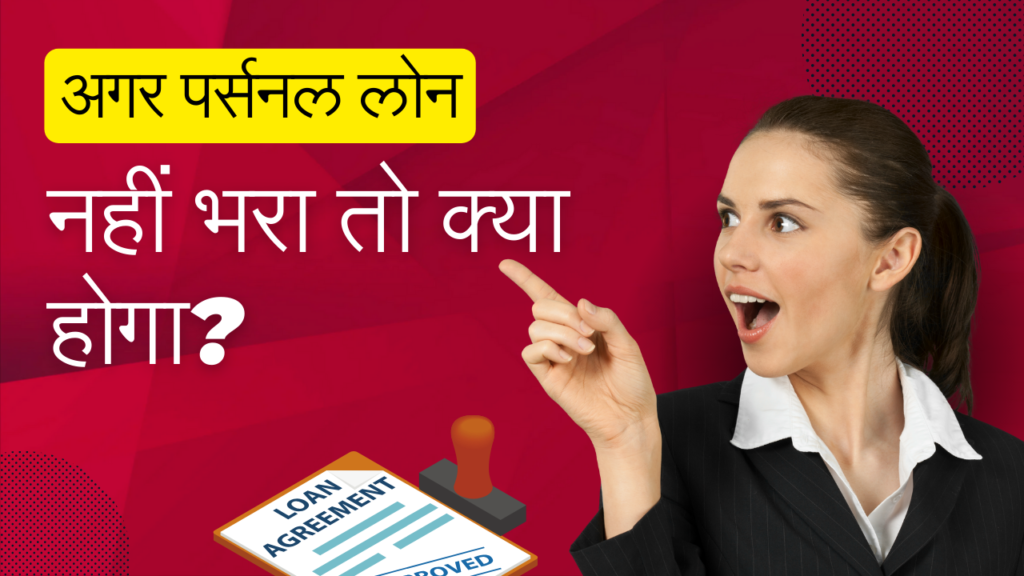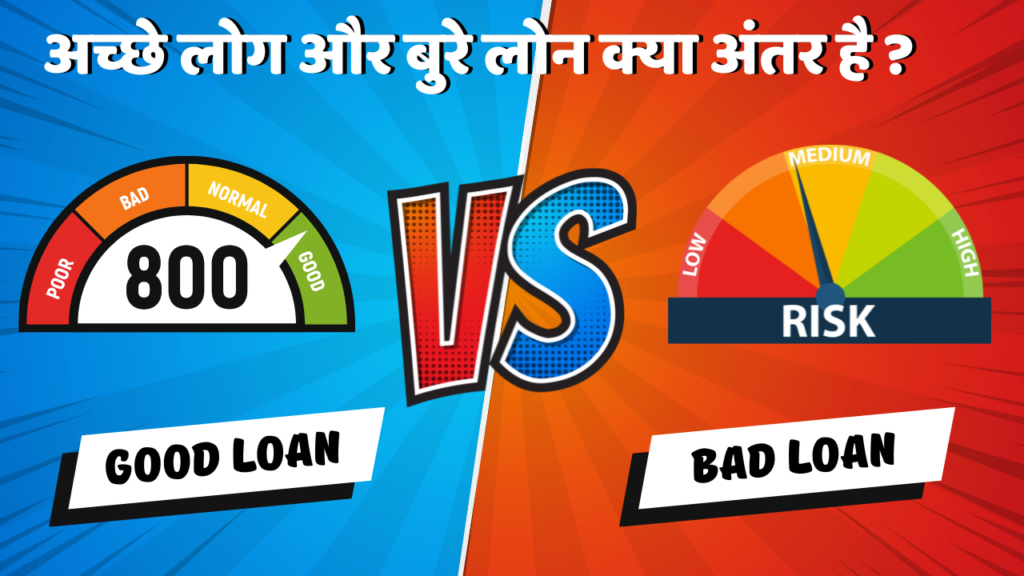Summary
A loan debt trap happens when someone keeps borrowing money to repay old loans, causing a never-ending cycle of debt. This usually occurs when income is not enough to cover EMIs and daily expenses. Warning signs include frequent borrowing, missed payments, and only paying the minimum due. Loan settlement can help by allowing the borrower to pay a reduced amount and close the loan.
This lowers the total burden and stops harassment from lenders, but it affects your credit score. Before choosing a settlement, try other options like EMI restructuring, debt consolidation, or balance transfers. Settlement is useful when income is permanently reduced or legal pressure is rising. It’s important to get all agreements in writing. While not a complete fix, loan settlement offers a way to regain control and start rebuilding your finances.
Introduction
Numerous individuals loan settlement get trapped in a debt cycle when the loan and interest simply add up and up. Typically, it begins with your income not meeting your EMIs and bills, and therefore, you take new loans in order to settle the old ones. The load increases over time, and the exit gets tougher. Stopping the cycle relies on an earlier identification of the warning signs, such as missed payments and increasing interest. A deal settlement is one possible exit; you negotiate with the lender to pay a lesser amount, closing the deal. Even though it has a bearing on your credit score, it may relieve you and give you a second chance financially. This post defines a debt trap and how it can be broken with loan settlement
What Is a Debt Trap and How Can Loan Settlement Break It?
Many borrowers discover they are locked in a financial cycle when they borrow money, often just to survive. Usually referred to as a loan debt trap, this scenario is knowing the debt trap meaning and loan settlement will enable you to identify early warning signals and act before your financial situation becomes worse.
Debt Trap Meaning: When Borrowing Becomes a Cycle
When your income falls short of your loan repayments and costs, you find yourself forced to accept new loans to pay off past ones—a loan debt trap. The penalties and interest start piling up over time. Your debt gets bigger instead of lessening, therefore, your choices are reduced.
Some common reasons people fall into a debt trap include:
- Taking payday loans or credit card loans with hefty interest rates. Using loans to meet fundamental living costs
- Paying just a little due every month.
- Depending on fresh loans to pay off past-due EMIs
Managing everyday necessities, savings, and future planning is more difficult as one descends into a loan debt trap.
Warning Signs That You’re in a Debt Trap
Constant Borrowing and Missed Payments
That is a warning whether you are utilising credit to pay EMIs or borrowing one loan after another. Regular missed or late payments indicate that your financial situation is beyond control.
Growing Interest Burden
You find yourself in a cycle where most of your monthly income goes toward simply paying interest without lowering the principal amount. Many borrowers begin to lose financial control here.
How Loan Settlement Can Break the Cycle
One alternative is loan settlement. In this case, you work with your lender to shut your loan account by making a smaller payment than what you owe. Though in many circumstances it provides actual relief and a means of financial resetting, it sounds like a last resort.
Reduces Overall Burden
A loan settlement lowers your whole debt load. This releases income for other purposes and helps you stop building more interest. It does affect your credit score, but it also provides the opportunity for recovery over time.
Stops Harassment and Recovery Pressure
Lenders and recovery agencies are not allowed to pursue you for money once a settlement is decided upon and paid for. This helps you to get mentally calm and clear, the way you restore your finances.
When to Consider Loan Settlement for a Debt Trap
After Exploring Other Options
Only after alternative options, including restructuring, debt transfers, or EMI cuts, have been tried and failed can loan settlement be considered. It is best suited for borrowers whose decline in income or continuous financial problems render them unable to follow any form of repayment schedule.
With Proper Documentation
Always verify that the settlement is recorded in writing with the bank. This provides legal protection and helps to avoid conflicts down the road. Unchecked verbal commitments or incomplete payments could cause ongoing demands.
When Is Loan Settlement a Smart Way Out of the Debt Cycle?
Living with growing interest and continuous loan instalments might make one feel imprisoned. Many debtors in such circumstances question when to pick a loan settlement for debt trap release. Although it is not the first answer, under some circumstances, loan settlement can be the correct one.
Understanding the Debt Cycle
The debt cycle starts when your loans and bills outlay more than your salary. You grab additional loans to survive. Interest payments soon start to mount up. You wind up merely paying charges and fines instead of lowering your overall debt.
Signs of being stuck in a debt cycle include:
- Just minimal due payment
- Using borrowed funds to pay current EMIs
- constantly failing on payments
- Not even one savings left after the loan payment.
- What Is Loan Settlement and How Does It Help
The settlement of a loan involves negotiating with the lender to close your loan by paying a smaller amount. Once the agreed-upon payment is paid, the lender agrees to mark the loan as “settled.”
Why It May Be a Smart Move
It improves your credit score but also stops financial haemorrhage. You lessen the whole weight and steer clear of asset confiscation or legal action. It allows you an opportunity to reconstruct your finances free from continuous EMIs’ strain.
When to Choose Loan Settlement for a Debt Trap
Following Other Solutions Turns Out Not to Work
When all other ways of repayment are no longer feasible, loan settlement is most suited. This comprises:
- EMI restructuring or cutting back has not worked.
- Balance transfer is unworkable or unacceptable.
- There have been multiple defaults.
- Your financial situation seems unlikely to get better soon.
When Income Has Dropped Permanently
Should you have lost a job, experienced a company loss, or find yourself in a long-term medical crisis, and there is no quick solution to increase income, the settlement could be your best bet. It lets you break the cycle and head toward a new beginning.
When You Face Legal or Recovery Pressure
After many missed payments, lenders usually dispatch recovery agents or start legal notifications. A settlement can help to gently resolve the matter if you are unable to satisfy their needs, and tension levels are mounting.
How to Approach Loan Settlement Smartly
Talk to the Right Department
Usually, banks have a separate settlement or recovery staff. Wait, not for them to get back to you. Start first, be honest about your circumstances, and request a one-time settlement alternative.
Always Ask for a Written Settlement Letter
Once conditions are decided upon, ensure you get a signed and stamped settlement letter on the bank letterhead. This guarantees the deal and shields you from later claims.
Prepare for Credit Score Impact
Temporarily lowering your credit score will result from loan settlement. Still, it’s usually better than just defaulting without any kind of remedy. You may restore your credit. You may restore your credit with disciplined financial practices and modest, secured loans over time.
Alternatives to Loan Settlement for Escaping the Debt Trap
Falling behind on loan payments can be rather distressing. Although one choice is loan settlement, it results in long-term credit damage. Many borrowers wish to know whether there exist better options than loan settlement for debt relief. The good news is that there are various approaches to take control without sacrificing your credit score.
Why Look Beyond Loan Settlement?
Only when all other choices for repayment have failed can loan settlement be given any thought. It lowers your outstanding debt, but your credit record shows “settled,” which lenders consider a bad indication. Your present income, total debt, and long-term objectives can help you decide which solution best fits.
EMI Restructuring as a First Step
Request Lower EMIs or Extended Tenure
Should your income temporarily drop, think about asking your lender for E MI restructuring. Most banks are ready to change your monthly payment by extending a temporary grace period or changing the loan duration.
Helps Maintain Credit Score
Restructuring done under lender approval does not harm your credit history. It demonstrates accountability and helps prevent marks of default or settlement.
Loan Refinancing or Balance Transfer
Shift to a Lower-Interest Lender
You can seek a balance transfer to another lender providing better terms if the interest rate of your present loan is high. This can help you save over the loan term and lower your EMIs.
Best Suited for Secured Borrowers
If you still have regular income and a decent credit score, this choice will work. For persons who are struggling but not yet in default, it is perfect.
Debt Consolidation for Better Management
Combine Multiple Loans into One
Combining your several loans into one loan helps you to simplify your payments. Should the new loan have better terms, it also reduces the general interest.
Improves Payment Tracking
Consolidation lets you concentrate on only one E MI rather than multiple. This keeps financial discipline and lowers the possibility of skipping payments.
Credit Counselling and Financial Planning
Get Professional Guidance
Credit counsellors can examine your circumstances and provide doable actions if you’re not sure which direction is ideal. They can assist with financial planning, negotiating, and budgeting.
Non-Profit Services Available
Many firms provide low-cost or free counselling. This can be a solid basis from which to start any significant financial decision-making.
Family Support or Asset Liquidation
Explore Personal Loans from Family
If at all possible, borrowing from family with a well-defined payback schedule helps to evade legal pressure and interest charges. It should be carried out openly to prevent misinterpretation.
Sell Unused Assets
Liquidating devices, old cars, or investments will help pay for immediate EMIs and prevent dragging yourself further into the debt hole. Often, it’s a better option than paying off debt.
Pros and Cons of Using Loan Settlement to Avoid Bankruptcy
When debt becomes overwhelming, borrowers sometimes find themselves between two primary options: loan settlement against bankruptcy. Although they are last-resort treatments, their effects, risks, and long-term repercussions differ. Loan debt trap Choosing one of them requires a serious review of your financial situation and future goals.
Understanding Loan Settlement
The settlement of your loan is a negotiated agreement arrived at between you and your lender. The lender agrees to write off the remaining outstanding loan; you consent to pay a portion. Usually, it has to do with circumstances whereby the borrower is not financially able to repay the entire debt.
Benefits of Loan Settlement
Less severe than bankruptcy
Considered as a less severe option than bankruptcy is the settlement. It allows you to avoid court and be free from legal procedures.
Quicker resolution
Loan settlements can be completed quickly after both sides accept. This terminates the account and releases some of the legal threat or gathering call stress.
Avoids asset seizure
Should the lender agree, settlement may help retain ownership, unlike bankruptcy, which may demand for liquidation of either personal or business assets.
Chance to rebuild sooner
Settlement affects your credit report, but it can enable you to recover financially faster than a bankruptcy declaration, which stays on your credit report for a more long run.
Drawbacks of Loan Settlement
Negative credit score impact
Reported to credit bureaus, a settled debt shows an incomplete payment history. This lowers your credit score and may make it more difficult for you to get loans or credit cards in the future.
Not legally binding unless documented
Verbal agreements for settlement without written proof could lead to subsequent disputes or efforts at collection. One does need a decent letter.
May not stop all legal actions
Should the terms not be satisfied or if multiple loans are involved, lenders may still seek legal action.
Understanding Bankruptcy
Bankruptcy is a legal declaration of a person or company unable to fulfil its debts. Usually including court processes, asset appraisals, and a thorough restructuring or forgiveness of debts, this falls under the Insolvency and Bankruptcy Code (IBC) in India.
Pros of Filing for Bankruptcy
Legal protection from creditors
Declared bankruptcy means that creditors are not permitted to pursue legal action, recovery companies, or collection calls.
Total debt release
In extreme cases, bankruptcy can wipe out all unsecured debt, therefore giving the borrower a whole financial reset.
Ordered procedure
It is under court control, which reduces the likelihood of improper treatment or lender harassment.
Cons of Bankruptcy
Public record and social stigma
Public records about bankruptcy could compromise your personal and professional reputation.
Severe impact on credit report
It appears on your credit report for several years and can prevent future credit or financial service access.
Loss of assets
The type of bankruptcy you file will decide whether you have to sell valuable assets, such as real estate, to cover debt.
Making Decisions Between Bankruptcy and Loan Settlement
When to Consider Loan Settlement
Loan settlement is suitable even if you still have some partial capacity to pay. It’s also great if you can negotiate straight with the bank and want to avoid court involvement. If your financial difficulties are temporary or restricted to one debt, settlement will be enough to solve them.
When Bankruptcy Might Be Better
If your debt load is spread across multiple lenders and your income is permanently impaired, bankruptcy could provide greater help. It is also a better option in situations calling for legal protection and a total reset.
Realistic Expectations: The Value of Loan Settlement
Many debt-ridden consumers often have one crucial question: in loan debt trap situations, how successful is loan settlement? While debt settlement offers relief, first, you need to be aware of what it can and cannot achieve before opting to go further.
Definition of Loan Settlement
Under a loan settlement, a borrower and her lender negotiate a one-time partial payment in place of the entire outstanding loan. Usually, this relates to a borrower’s default or inability to make consistent payments brought on by financial problems.
When Loan Settlement Helps
Reduces Immediate Financial Pressure
Loan settlement can immediately relieve the weight of constant reminders, calls for collection, and default notices. Choosing a lesser payback helps you avoid late penalties, extra interest, and additional expenses.
Prevents Legal Action
Many times, once a settlement is obtained, lenders may stop legal recovery efforts. This can protect you, especially in unsecured loan circumstances, from court hearings, property seizure, or wage garnishment.
A Way Out When Other Options Fail
For debt-trap borrowers without income or resources to allow repayments, settlement could be the only logical response. It provides a means of escape from an insurmountable debt.
Where Loan Settlement Falls Restricted
Impacts Credit History
On your credit report, a settled status indicates that you did not completely pay off the debt. Lenders regard this as a warning sign. It lowers your credit score and makes future borrowing more difficult, even if it might release you from present debt.
Not a Full Waiver
Usually involving a large cash payment, settlement only makes sense if the lender agrees. Should you find it difficult to arrange that sum, the offer could be withdrawn. It does not release your liability unless formally accepted and noted by the bank.
Temporary Relief, Not Financial Discipline
Loan settlement addresses only the surface of financial issues. One stands a large chance of re-entering debt without adjusting income sources, spending patterns, or planning. It’s merely a patch-up; it’s not a whole financial solution.
How Much Can It Help?
Depends on the Lender and Your Situation
The waived proportion varies. Some lenders, especially if the account has been non-performing for a long period, would be ready to settle for a fraction of the outstanding. Others can request more depending on your pay scale and loan type.
Affects Future Loan Eligibility
Post-settlement, your access to apply for new credit cards, loans, or even rental agreements may be restricted. Many financial institutions are quite reluctant about applications having a past settlement on file.
Requires Strong Negotiation and Documentation
Moreover, factors affecting efficacy are your bargaining abilities and whether or not you get the agreement in writing. Without enough evidence, your settlement could be disputed or reported fraudulently.
Conclusion
Ending up in a loan debt trap is a scary situation to be in, but there are ways out of the cycle. Settlement is an option to be considered. This tactic can reduce your total debt and provide a fresh start if other options like lowering your EMI or transferring your balance backfire. It helps you to take control and release recuperation pressure, even if it could momentarily lower your credit score. Still, you should only settle under suitable documentation and a clear arrangement with your lender. You should also look at several options, including debt reduction, credit counselling, or family help, before choosing a settlement. Remember that debt settlement is merely a beginning; it is not a complete solution for your financial problems. With dedication and planning, you can break out of the debt cycle.
FAQ’s
Ans: You find yourself borrowing more to pay croff past-due debt when your income is inadequate to meet your loans and obligations—a loan debt trap results. Over time, penalties and interest add up, making breaking out of the cycle more challenging.
Ans: Paying less than the total due closes a loan account. Although it could temporarily lower your credit score, it reduces your overall burden and keeps recovery companies from beginning their procedure free from influence.
Ans: You should give serious thought after considering other options as EMIs restructuring or debt consolidation, especially if your income has permanently dropped or you are under legal or recovery pressure.
Ans: Even if it brings relief, loan settlement damages your credit score and borrowing capacity. It also requires extensive written documentation to avoid lender disputes downstream.

